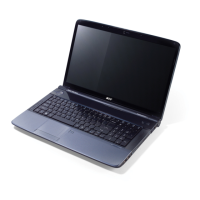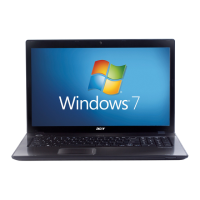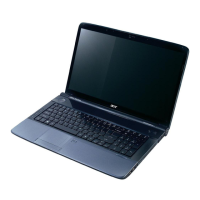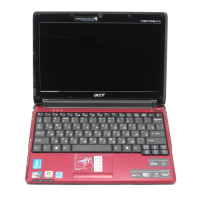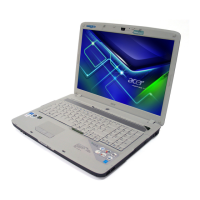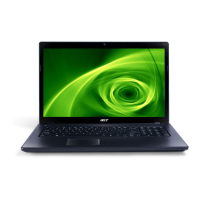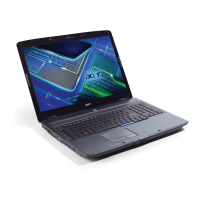How to fix Acer Aspire 7540 Laptop when it doesn’t power-off?
- SstevencurtisJul 26, 2025
If your Acer Laptop doesn’t power-off, hold and press the power switch for more than 4 seconds. The issue may be with the system board.

 Loading...
Loading...
How to fix Acer Aspire 7540 Laptop when it doesn’t power-off?
If your Acer Laptop doesn’t power-off, hold and press the power switch for more than 4 seconds. The issue may be with the system board.
| Storage | Up to 500 GB HDD |
|---|---|
| Battery | 6-cell Li-ion battery |
| LAN | Gigabit Ethernet |
| Webcam | Acer Crystal Eye webcam |
| Processor | AMD Turion II Dual-Core Mobile Processor |
| Display | 17.3-inch HD+ (1600 x 900) LCD |
| Graphics | ATI Mobility Radeon HD 4200 |
| Optical Drive | DVD-Super Multi double-layer drive |
| Operating System | Windows 7 Home Premium |
| Chipset | AMD M880G Chipset |
| Wireless | 802.11b/g/n Wi-Fi |
Introduces the set of guides available for the Acer notebook, including the Quick Guide and User Guide.
Identifies and describes components visible from the top view, including the webcam.
Details the keyboard, touchpad, and touchpad toggle for user input.
Explains power button, wireless/Bluetooth indicators, status lights (Num Lock, Caps Lock), and palmrest.
Describes the power button, backup key, and other functional keys.
Explains key combinations for controlling system functions like brightness and volume.
Details the multi-in-1 card reader found on the closed front view.
Describes ventilation slots on the rear of the notebook.
Details the DC-in jack for power and Ethernet (RJ-45) port for networking.
Describes the external display (VGA) and HDMI ports, plus USB 2.0 ports.
Details line-in jack, microphone jack, and headphone/speaker out with S/PDIF support.
Describes the optical drive, its indicator, eject button, and emergency eject hole.
Details the modem (RJ-11) port, USB 2.0 port, and Kensington lock slot.
Describes the battery bay, lock, and release latch for the battery pack.
Details the memory compartment and hard disk bay.
Explains ventilation slots and cooling fan for maintaining system temperature.
Specifies the operating system and platform details including processor and chipset.
Details display aspect ratio, resolution, and graphics card options.
Covers system memory, audio features, and storage subsystem options.
Lists communication hardware (webcam, WLAN, Bluetooth, LAN, modem) and privacy controls.
Provides physical dimensions and weight with battery options.
Details power subsystem components and all available input/output ports.
Specifies operating and non-operating temperature and humidity ranges.
